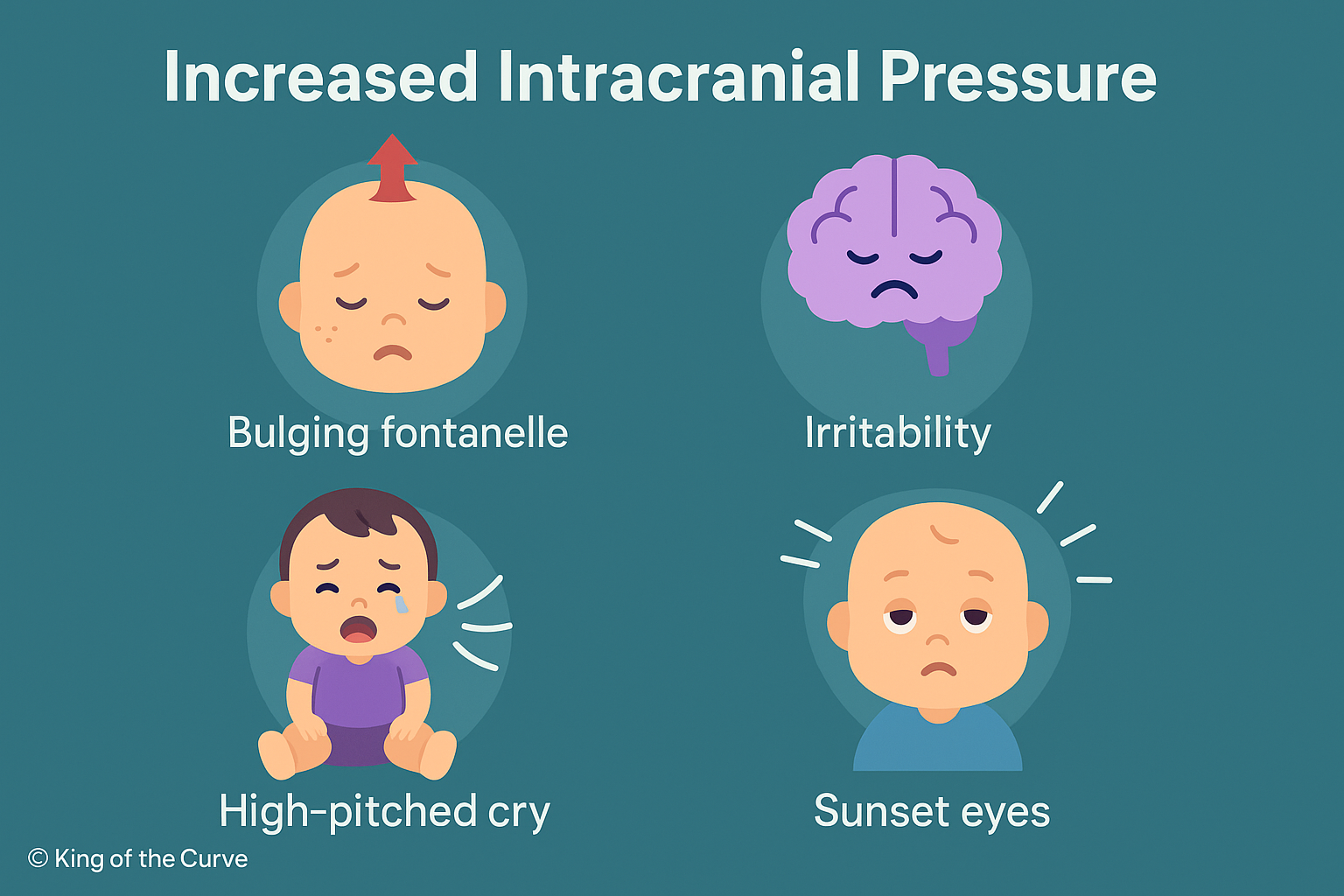🧠 Pediatric Increased Intracranial Pressure (ICP): NCLEX Signs & Nursing Actions
Whether due to trauma, infection, hydrocephalus, or a brain tumor—increased intracranial pressure in children is a critical, frequently tested topic on the NCLEX. Unlike adults, infants can’t verbalize headaches or visual changes, making early recognition even more important.
This blog simplifies the symptoms, assessment techniques, and nursing interventions with a clear KOTC visual and charted breakdown.
🚼 Early vs Late Signs of Increased ICP in Infants & Children
| Sign | Infant | Child |
|---|---|---|
| Bulging Fontanelle | ✅ Present | ❌ Closed |
| High-Pitched Cry | ✅ Common | ❌ Uncommon |
| Irritability | ✅ Present | ✅ Present |
| Lethargy | ✅ Possible | ✅ Possible |
| Poor Feeding | ✅ Early Sign | ❌ Not Applicable |
| Sunset Eyes | ✅ Classic Finding | ✅ In Severe Cases |
| Cushing’s Triad | ❌ Rare | ✅ Late Sign |
💡 Cushing’s Triad (Late ICP Sign in Children)
| Indicator | Description |
|---|---|
| Hypertension | Increased systolic BP with wide pulse pressure |
| Bradycardia | Slow heart rate due to vagal stimulation |
| Irregular Respirations | Altered breathing due to brainstem pressure |
This triad means herniation is imminent — act fast.
🩺 Nursing Priorities for Increased ICP
Elevate HOB to 30°
Maintain neutral head position
Reduce stimuli (dark, quiet room)
Monitor LOC & pupillary changes
Administer osmotic diuretics (e.g., mannitol) as ordered
Prepare for ventriculostomy or surgical decompression
🧠 NCLEX-Style Scenario
An infant has a bulging fontanelle, projectile vomiting, and sunset eyes. What should the nurse do first?
✅ Answer: Elevate the head of the bed and notify the provider. Suspect increased ICP.
💡 Mnemonic: “PRESSURE”
P – Pupils sluggish or unequal
R – Respiration irregular (late)
E – Elevated BP
S – Sunset eyes
S – Seizures
U – Unconsciousness
R – Reflex changes
E – Emesis (projectile)
🏁 Final Thoughts
Recognizing the subtle early signs of increased ICP in infants can be life-saving. Whether you’re prepping for the floor or the NCLEX, use this blog and the KOTC visual library to respond like a pro.
📥 Download the King of the Curve App
✔ Visual learning
✔ Pediatric prioritization drills
✔ Daily NCLEX questions
Frequently Asked Questions (FAQs)
-
Aim for 4-6 focused hours, ensuring you incorporate breaks to avoid burnout.
-
Practice mindfulness techniques, take practice exams under realistic conditions, and maintain a balanced lifestyle.
-
Set short-term goals, seek support from mentors, and reward yourself for small achievements.
-
Regular exercise improves focus, reduces stress, and enhances overall mental clarity.
-
KOTC offers personalized learning tools, gamification features, and adaptive question banks to help students stay on track without burnout.


